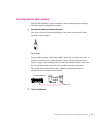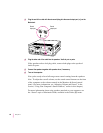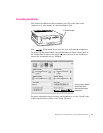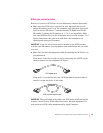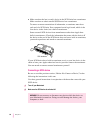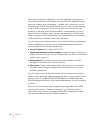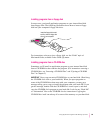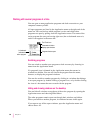
About Macintosh networking
Your Macintosh can connect to a network that consists of as few as two
computers or as many as thousands or even millions of computers and other
devices. The network allows you and the other people connected to it to share
information, access remote services, and share computing resources such as
printers and modems.
A network extends the features of your Macintosh by extending your reach to
the services and resources provided on a network. For example, your
computer alone lets you store, retrieve, and modify information on floppy
disks, hard disks, and CD-ROM discs. On a network, however, you can also
store and retrieve information on the hard disks and CD-ROM discs of other
computers, access information that other people have stored for you, and use
electronic mail or other network services.
Your computer can be connected to several kinds of networks including
the following:
m
LocalTalk
To connect to a LocalTalk network, you connect a LocalTalk
cable to either the modem port or the printer port on your computer.
Through that cable, you can both print on a printer shared by other
computers and access a central server.
m
Ethernet
To connect to an Ethernet network, you need to install an
Ethernet card in the communication or PCI (peripheral component
interconnect) slot in your computer. If your computer came with an
internal modem, it is already installed in the communication slot, so you
must purchase an Ethernet card that fits in the PCI slot.
m
Alternative networks such as TokenRing, ISDN, or FDDI
To connect to any of
these networks, you need to install a PCI card in one of the PCI slots in
your computer.
More detailed information about connecting to LocalTalk and Ethernet
networks follows.
53
Expanding Your Computer and Using Its Special Features



